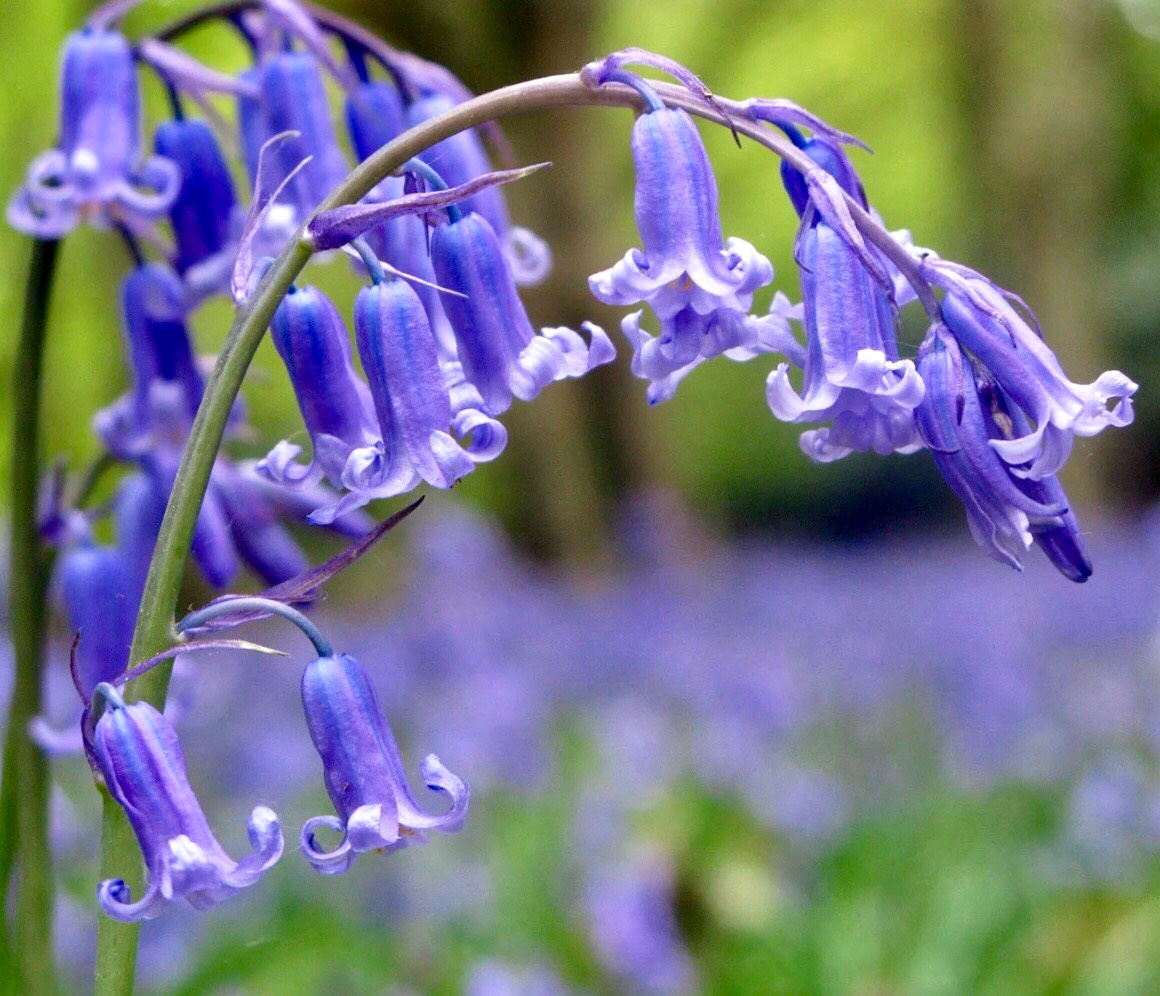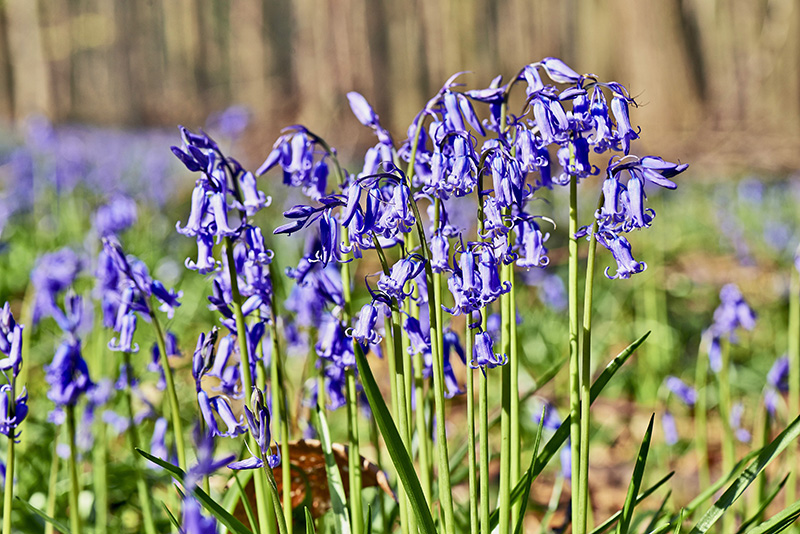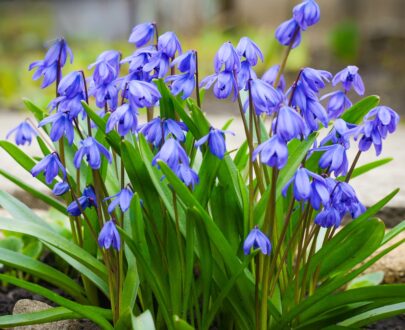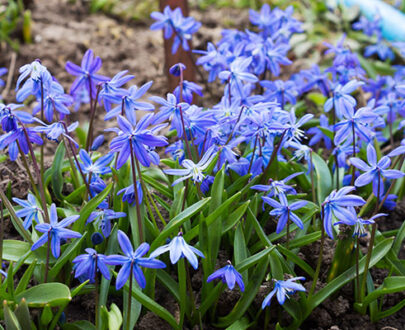- You have no items in your shopping cart
- Subtotal: £0.00
Background
Violet-blue beauties, simply beautiful and enchanting, bluebells are classic and a sign that spring is in full swing. They blossom in mid-late spring and typically grow up to 25-30cm.
Also known as hyacinthoides non-scripta, english bluebells are incredible naturalisers that last up to 5 weeks or more, and they multiply impressively every single year. They’re native to western Europe and are associated with ancient woodland, particularly in moderately fertile and moist soil.
They also grow along hedgerows and in fields, creating a delightful blue blanket of flowers, often associated with the spring season.
Did you know? It takes at least five years for a seed to develop into an English Bluebell bulb, making it a very slow grower.
Appearance
English bluebells are usually a deep violet-blue colour, and it’s petals are bell-shaped with up-turned tips. They grow six petals and are incredibly sweet-smelling, boasting a creamy white-coloured pollen inside.
–
Uses
Many insects reap the benefits of bluebells, such as butterflies, bees and hoverflies that all feed on the nectar. The bees will sometimes ‘steal’ the nectar from the flowers, by biting a hole in the bottom of the bell.
In the past, bluebells have been used for a variety of different things. Their sicky sap was once used to bind the pages of books, and in the Elizabethan period their bulbs were crushed to make starch for the ruffs of collars and sleeves.
Due to their toxicity, there isn’t much use for bluebells in modern medicine. However, research on how these flowers could potentially help fight cancer is still ongoing.
–
Other fantastic facts…
- The first bluebells are believed to have appeared in Britain after the last ice age.
- There are rare ‘albino’ bluebells which are white as they lack the blue pigment.
- Bluebells are poisonous and contain compounds to defend themselves from animals and insect pests.
- Bluebells are also known as ‘fairy flowers’, as according to myths they trap and lure people passing in the woods!
Maintenance
After blooming, seed pods will form where the flowers once were. Also known as Hycacinthoides non scripta, we advise you maintain these dainty bluebells for the following year by allowing the leafs to turn brown before removing them, this provides the ultimate nourishment.
GROWING INFORMATION
|
Flowers: |
Mid – late spring. |
|
Height: |
25-30cm |
|
Position: |
Partially shaded areas for best results or full sun. |
|
Planting: |
4″ deep and 3-4″ apart, ideally in groups of five or more. |
|
Soil: |
Moderately fertile, Moist but well-drained. |



















Customer reviews
4 reviews for Bluebell Bulbs – Hyacinthoides Non-Scripta – In The Green
Another great buy & service. Many thanks.
I am a returning customer.Great bulbs.Great seller.Recommended
So good I bought two more the day the first parcel arrived. 10/10
I was delighted when I received my woodland English Bluebell bulbs and mixed Daffodils. I will definitely be ordering again!
Write a customer review